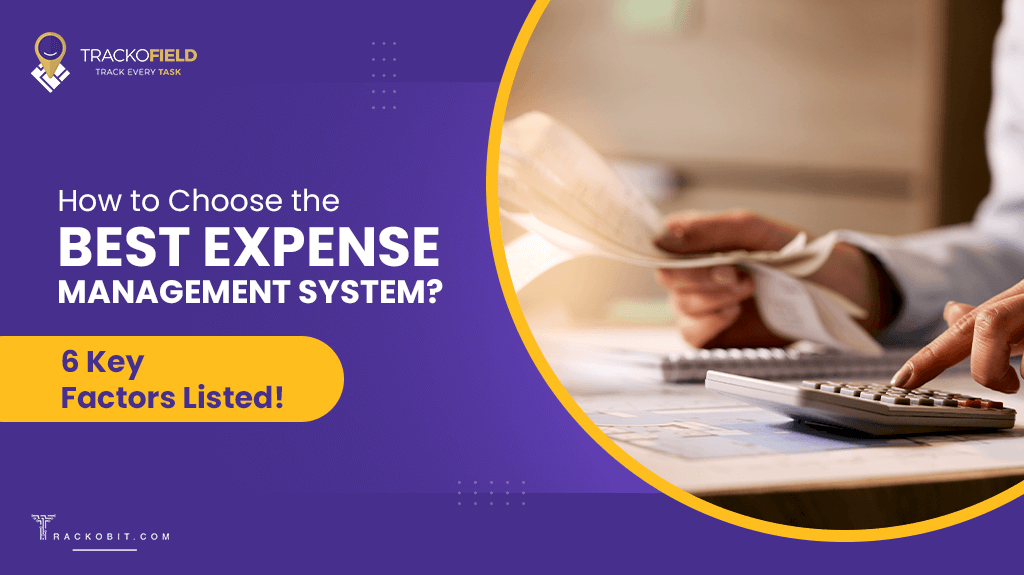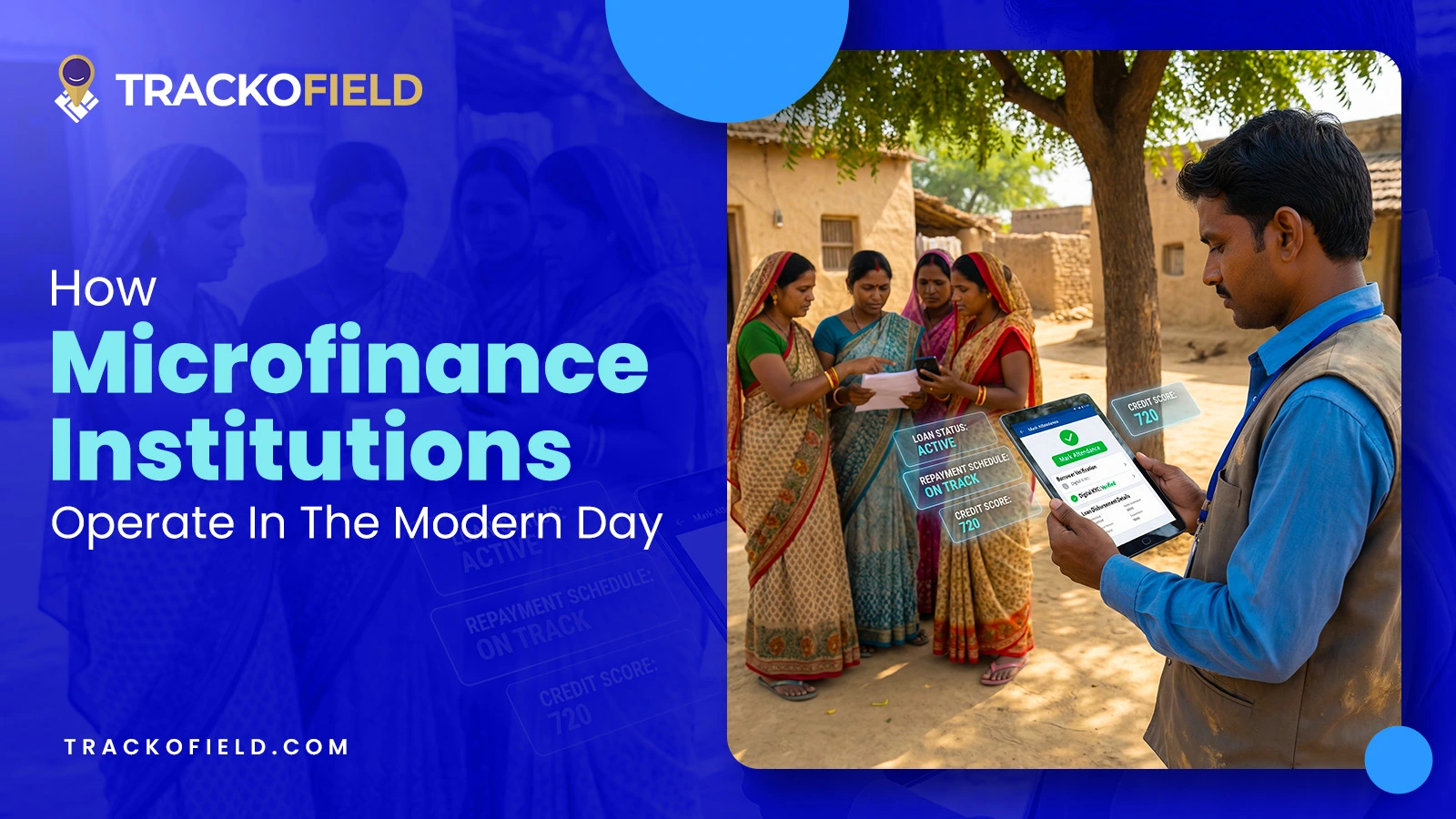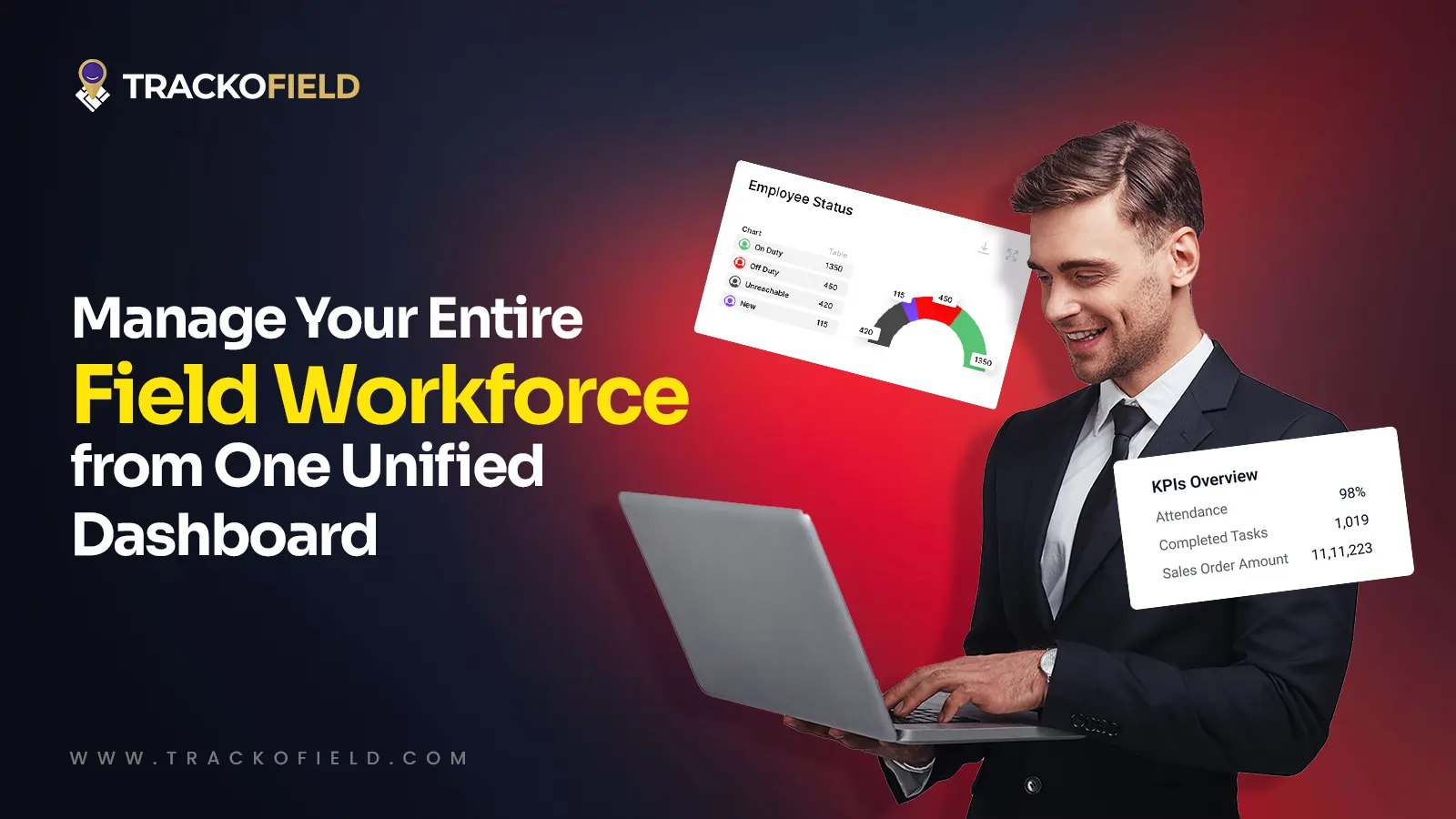-
TrackoBit
Manage commercial vehicles with the new-age Fleet Management Software
TrackoBit -
TrackoField
Streamline your scattered workforce with Field Force Management Software
TrackoField -
Features Resources
-
Blog
Carefully curated articles to update you on industrial trends. -
White Paper
Insightful papers and analysis on essential subject matters. -
Glossary
Explore an alphabetical list of relevant industry terms. -
What’s New
Get TrackoBit & TrackoField monthly updates here. -
Case Study
Explore the cases we solved with our diverse solutions. -
Comparisons
Compare platforms, features, and pricing to find your best fit.
-
About Us
Get to know TrackoBit: our team, ethos, values, and vision. -
Careers
Join the most dynamic cult of coders, creatives and changemakers. -
Tech Support
Learn about our technical support team and services in detail. -
Events
Check out the exhibitions where we left our marks and conquered. -
Contact Us
Connect with us and let us know how we can be of service.
How to Choose the Best Expense Management System for Your Organisation?
- Author:Tithi Agarwal
- Read Time:9 min
- Published:
- Last Update: February 4, 2025
Table of Contents
Toggle
Managing expenses can be made easy when businesses choose the best expense management system. Expect faster reimbursement and insights into spending when make the right choice.
Table of Contents
Toggle
2+2= 4
We wish it was this easy to manage a company’s transactions and finances. But it is far more complicated, and doing them manually can easily bring dread to the most seasoned accountant or finance department head. (No wonder why BOB from the accounts department is always so tired and stressed out) Help BOB out by automating expense management through efficient expense management system.
Easier said than done, right?
Finding the best expense software for a business is tricky. There are a variety of service providers in the market with distinct features and services. But worry not, we are here with just the right article to help to make the right choice. This article will help you select the right software and vendor.
Let’s get into it!
6 Key Considerations For Selecting the Best Expense Management System
To begin with, it is essential to know what to consider when considering investing in the right expense management system. Here are the 6 key considerations for you to know about:
1. Integration with Existing Financial Systems
The ease of integration of the expense management system with your current financial systems is an important consideration. This includes synchronisation with the HRMS,, payroll, accounting, banking, and other platforms you currently use.
The integration minimises the need for manual data transfer and lowers the possibility of errors associated with it by enabling smooth data flow between systems. By streamlining processes, real-time financial records are made possible, and consistent, accurate financial data is reflected across all systems.
By consolidating information from multiple sources onto a single platform, the software can offer a more comprehensive and precise picture of the business’s financial situation. Making data-driven, well-informed decisions is aided by this.
2. Scalability and Flexibility of Workflows and Processes
The needs you have for expense management and financial operations will change as your business grows. It is, therefore, essential to choose expense software that can grow and expand with your company.
Scalability is the capacity of the expense software to accommodate higher volumes of expenses as the business grows. This could entail handling more users, tracking more expense categories, or managing more transactions. By choosing a scalable expense management software, you won’t have to repetitively pay for expensive and disruptive system upgrades and can continue business with great flexibility without shelling out hefty money.
3. Automate Expense Management
One of the main goal of implementing expense management system is to reduce time-taking and costly expense reporting tasks.
Automated tasks can be completed with little assistance from employees thanks to automation capabilities. These consist of scheduled expense report generation, automated policy enforcement (the system flags non-compliant expenses), and automatic data entry from digital receipts. In addition to reducing the possibility of human error, this gives employees more time to work on more worthwhile projects.
Think about how the expense report software can help you manage your spending effectively. This could include functions like user-friendly user interfaces that make it simple for staff members to submit expenses or real-time expense tracking, offering instant spending visibility.
Effective spending software expedites and enhances the accuracy and speed of expense reporting while easing the administrative strain of managing spending.
4. Data Security and Compliance
Businesses must ensure that the software they choose offers strong security features to guard against hacks and cyberattacks when handling sensitive financial data.
Seek expense management system offering frequent system security updates, secure access controls, two-factor authentication, and data encryption. Additionally, it is essential that the expense software conforms with different data privacy laws, like the California Consumer Privacy Act (CCPA) in the United States and the General Data Protection Regulation (GDPR) in the European Union.
In terms of compliance, the expense management solution ought to be flexible enough to adjust to shifting business requirements and legal environments. This entails having tools for tracking and reporting compliance issues and the ability to update spending policies automatically.
This prevents potential breaches and makes providing necessary documentation easier during audits.
5. Reporting and Analytics Capabilities
Features for reporting and analytics turn unprocessed data into useful insights, enabling companies to make data-driven decisions.
Robust expense management system ought to provide adaptable reporting features that enable companies to monitor and evaluate different facets of their spending. This entails producing thorough reports that include a breakdown of all expenses by category, employee, or department as well as trend analysis to identify patterns in spending over time.
More in-depth insights can be obtained by using advanced analytics capabilities, which can also be used to spot possible fraud, spot outliers in spending data, and find areas where money can be saved.
6. User Experience and Adoption
The interface should be designed keeping mind the ease of use for users providing easy-to-use functionality and navigation. This reduces the need for training while also increasing efficiency. Enhancing the user experience and encouraging consistent, timely use are two benefits of implementing features that speed up the expense submission process, such as a mobile app for logging expenses and digital receipt scanning.
The extensive support and training materials offered by the expense management system provider can also help with adoption and continued use. Technical problems can be quickly fixed by the support team who are always hands-on reducing downtime and preserving user trust in the system.
Features to Must Have in Expense Management System
Businesses must invest in an expense management system that automates the expense tracking and management process just like TrackoField.
Mobile App for Easy Evidence Uploads: Employees through TrackoField’s executive app can now upload bill/receipt pictures remotely. No more pocket full of bills!
Customisable Hierarchy for Faster Approval: Make reimbursement faster by notifying all the concerned managers or heads only of the claim. Bonus- this list is customisable!
Real-time Notifications for Claim Status Check: Executives and managers are notified whenever any claim is uploaded and of further progress and changes. Save trips to accounts departments!
Cap on Spending and Reimbursements: Limit spending and reimbursement amount as per the team, category and designation.
In-detail Expense Reports: Gain a clear idea of the spending pattern and recognise violators with smart analytics.
Seamless Integration: Simplify salary computation and expense management with easy integration into other financial software like payroll software, accounting software, and more.
What to Look for in Expense Management Software Providers?
Defining Requirements and Objectives
Clearly defining your requirements and objectives ensures that your expense software selection process remains focused. It provides a basis for comparing solutions and measuring their success once implemented. The right expense management system should meet your current needs and adapt to future business growth and changes.
Start by identifying the challenges you want to address in your current expense management process. Next, outline your specific expense software requirements. Consider user-friendliness, mobile access, customizability, security features, reporting capabilities, and scalability.
Requesting Demos and Evaluating Expense Management Solutions
Once you’ve shortlisted software vendors, the next stage is requesting demos for a more thorough evaluation. A demo is an opportunity to see the software in action. TrackoField offers a free trial without credit card details.
Please pay close attention during the demo process and consider recording it to share with other stakeholders. Asses its automation capabilities, reporting and analytics tools, and security measures. Also, consider how well the expense management software can integrate with your existing systems.
Reputation and Reliability
Look into the vendor’s history in providing expense management system. A vendor with a long-standing presence in the market and a track record of successful implementations may indicate reliability. Also, seek out testimonials and reviews from other previous clients who have used the vendor’s system. Positive feedback can provide insights into the providers’s reputation and reliability.
Further on, it’s best to select the one that has industry recognition, such as certifications and others from industry associations or organisations. This can further validate the vendor’s reputation for reliability and excellence in delivering expense management system.
Scalability and Customisation
Assess whether the system can accommodate the growth of your organisation. Consider factors such as the system’s ability to handle increasing transaction volumes, support additional users, and adapt to evolving business needs.
No one size fits all. Different businesses have different requirements. So it’s best to go for a software provider that offers a certain level of customizability and flexibility. This may include customising expense categories, approval workflows, reporting templates, and user interfaces to align with your business processes.
Customer Support and Service Level Agreements (SLAs)
There are bound to be glitches or malfunctioning of the software at some point, and the vendor’s availability or support proves its true credibility. During the selection process, look into the vendor’s support availability, including hours of operation and channels of communication (e.g., phone, email, live chat). Ensure that support is available when you need it, especially if your organization operates across different time zones.
Additionally, review the vendor’s service level agreements (SLAs) regarding support response times, uptime guarantees, and resolution times for issues. Clear SLAs provide transparency and set expectations for the level of service you can expect from the vendor.
All-in-One Expense Management Software or Standalone Expense Management Software: Which is Best for Your Business?
Confused about which one to choose? Here is an easy comparison between the two to help you out.
| Parameters | All-in-One Expense Management Software | Standalone Expense Management Software |
| Scope of Functionality | All-in-one solutions provide a holistic approach in which an entire suite of financial tools is packaged together, such as corporate cards, multi-entity management, invoice management, and more – along with expense reporting capabilities under one software umbrella. | Stand-alone expense management software focuses solely on streamlining your business expenses processes – tracking receipts, automating approvals, generating reports, and other similar functions. |
| Integration | Integrates with various other software systems such as accounting software, CRM systems, payroll and HR management tools for a comprehensive business solution. | May have limited integration options, primarily focusing on integrating with accounting software for expense reporting and reimbursement. |
| Complexity | Can be more complex due to the inclusion of multiple features and functionalities, requiring more comprehensive training and onboarding. | Tends to be simpler and more straightforward, with a focus on ease of use for expense tracking tasks. |
| Cost | Generally, higher cost due to the broader range of features and integration capabilities. | Often more cost-effective, as it provides a single-purpose solution without additional features. |
| Scalability | Typically offers scalability to accommodate the needs of businesses of various sizes, from small businesses to large enterprises. | May lack scalability options beyond basic expense tracking features, making it more suitable for small to medium-sized businesses. |
| Customization | Often provides a little more customization options to tailor the software to the specific needs and workflows of the organization. | Offers a little less customization options, primarily focusing on configuring expense categories, approval workflows, and reimbursement policies. |
Be it stand-alone or all-in-one expense management system, TrackoField readily offers the best of both.
Conclusion
Oh, we see BOB is a bit more relaxed, and also faster reimbursements are happening now in your company!
Minding all the tips, tricks, considerations, and factors while choosing the right expense management system for your business can have a lasting impact and effect. By automating the expense management process, you can expect time-saving, error-free calculations, much faster reimbursements, and faster salary computation.
TrackoField offers the best expense management software with all the right features businesses can ask for. It is open to customisation and ready to help businesses scale. With TrackoField, expect 24×7 support and seamless integration into pre-existing software.
Schedule a free demo now!
Frequently Asked Questions
-
What is expense management system?
It is a platform for controlling, tracking, processing and managing employee reimbursement and business-related expenses.
-
What are the challenges faced by companies during expense management?
Businesses might face challenges while managing their expenses manually, such as: - No visibility into expense data - Abundant Human Errors - Complicated Approval Workflow - Time-Consuming Process - Ineffieint Expense Reporting Process - Higher Chances of Fraid and Cash Leak - Complicated Reimbursement Process
-
What are the benefits of using the best expense management system?
Here are the benefits of using the system: - Time-Saving - Cost Reduction - Increased Accuracy - Visibility and Control - Employee Productivity - Compliance and Risk Mitigation
Tithi Agarwal is an established content marketing specialist with years of experience in Telematics and the SaaS domain. With a strong background in literature and industrial expertise in technical wr... Read More
Related Blogs
-

How TrackoField’s Analytical Intelligence Transforms Field Operations
Mudit Chhikara January 12, 2026Turn complex field data into clear insights. Use analytical intelligence to drive faster, smarter decisions.
-

Grameen Credit Score: Everything that NBFCs and MFIs Must Know in 2026
Shemanti Ghosh January 6, 2026Empower the underserved Joint Liability Groups (JLG), Self-Help Groups (SHG), and residents of rural India with better credit assessment and…
-

How MFIs Are Working In Modern Day Scenario? A Complete Breakdown
Mudit Chhikara December 30, 2025How field force automation is helping MFIs transform field operations.
-

Unified Field Workforce Dashboard: Monitor Tasks, Attendance & More In One Place
Mudit Chhikara December 15, 2025Bring full clarity to field operations with a single, real-time field workforce dashboard.

Subscribe for weekly strategies to boost field team productivity.
Your inbox awaits a welcome email. Stay tuned for the latest blog updates & expert insights.
"While you're here, dive into some more reads or grab quick bites from our social platforms!"Stay Updated on tech, telematics and mobility. Don't miss out on the latest in the industry.
We use cookies to enhance and personalize your browsing experience. By continuing to use our website, you agree to our Privacy Policy.




































